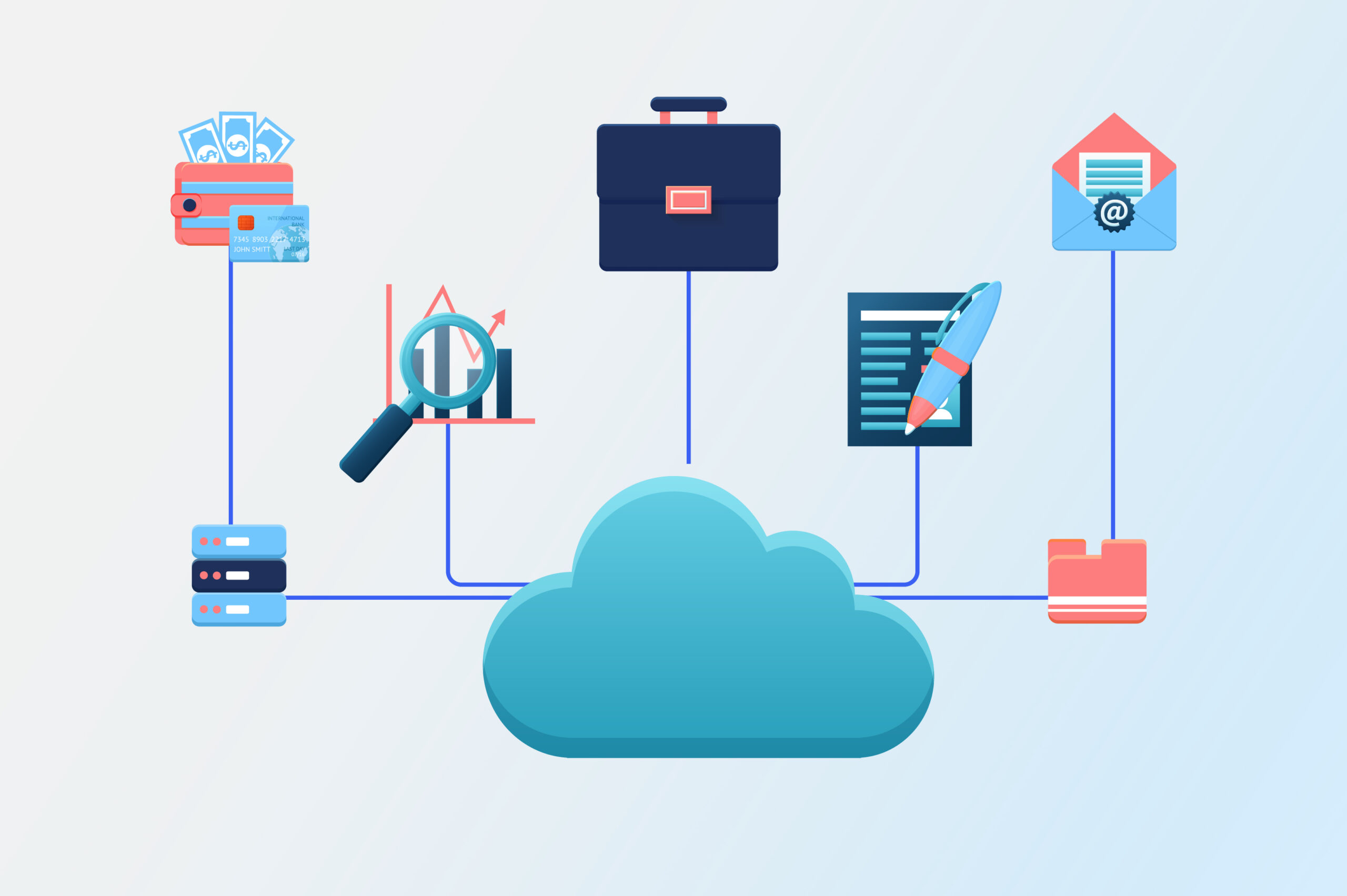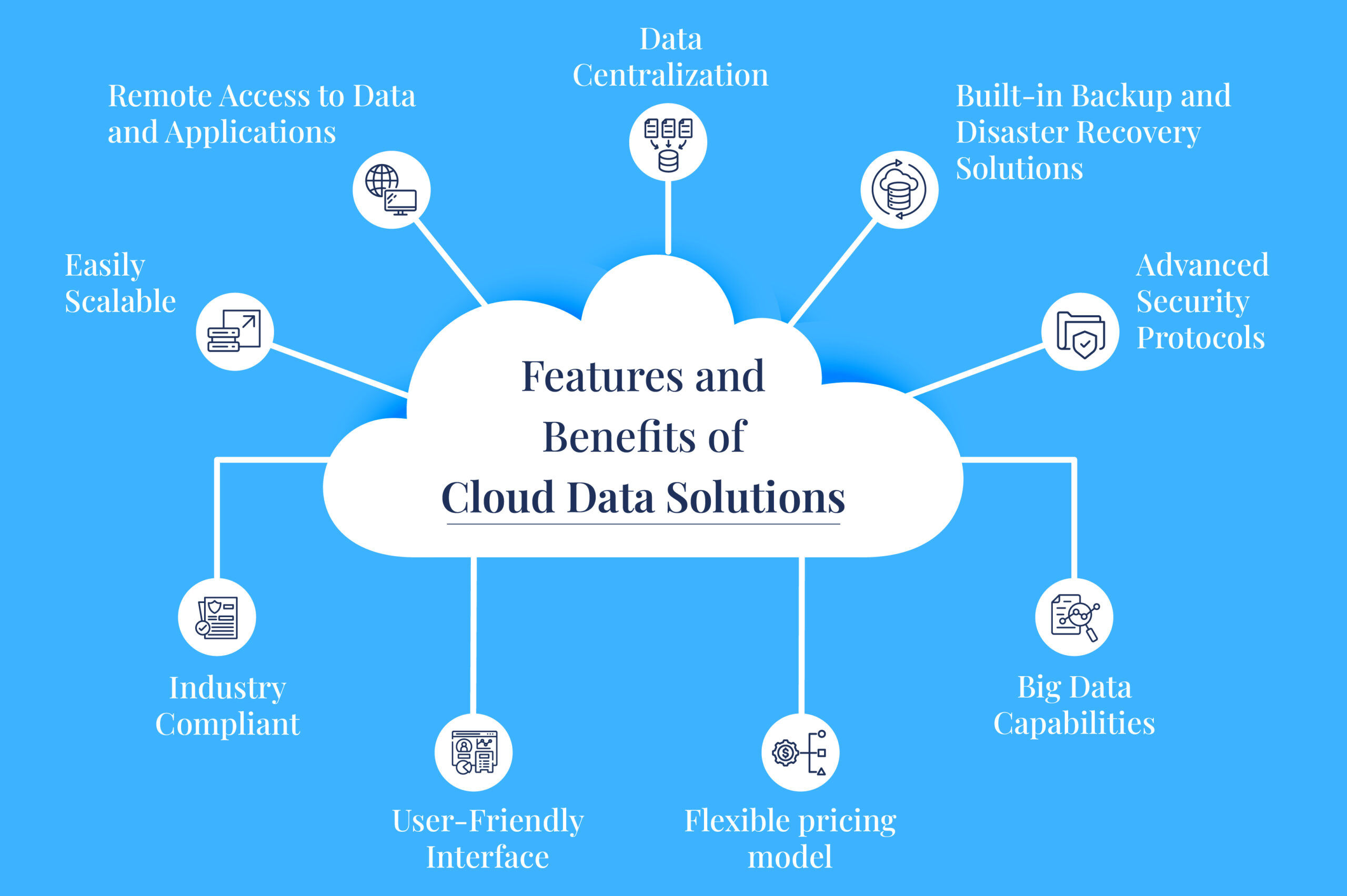How Cloud Data Solutions Drive Efficiency in Digital Transformation

Table of Contents
Introduction
In today’s digital age, the world is more connected than ever. From ordering your favorite food to your banking, everything is available at your fingertips. How we live, work, play, interact – everything has undergone digital transformation.
While digital transformation may seem like a straightforward shift from paper to digital, much more is happening behind the scenes, particularly when managing vast amounts of data.
Cloud migration strategies serve as the first step of this digital transformation process, providing essential support for organizations navigating their data handling challenges.
As an advanced data analytics solution provider based in New York, we believe that the first step toward successful digital scaling for our clients is embracing cloud data solutions. In this blog, we will delve into why cloud is a crucial enabler for efficiency in digital transformation.
Why Opt for Digital Transformation?
What does digital transformation mean to your business? Does it simply mean shifting record-keeping practices from books to digital files? In the post-COVID digital area, digital transformation is much more critical.
Digital transformation is a business culture shift towards innovation, technology, collaborative work, customer-centricity, and data-driven decisions.
It refers to the comprehensive integration of digital technology into all aspects of an organization, fundamentally changing how it operates and delivers value to customers.
What are Cloud-based Data Solutions?
Cloud-based data solutions refer to various services and technologies that enable organizations to store, manage, and analyze data using cloud computing infrastructure. One of the most prominent examples of cloud-based data storage is Google Cloud.
Features and Benefits of Cloud Data Solutions

- Easily Scalable: Allows for the adjustment of resources according to changing demands without physical infrastructure constraints.
- Remote Access to Data and Applications: Enables users to access data and applications from anywhere with an internet connection.
- Data Centralization: Consolidates data storage in a single, accessible location, improving data management and retrieval.
- Built-in Backup and Disaster Recovery Solutions: Provides automated backup processes and recovery options to protect data against loss.
- Advanced Security Protocols: Implements robust security measures, including encryption, firewalls, and access controls, to safeguard data.
- Industry Compliant: Adheres to regulatory standards such as GDPR and HIPAA, ensuring data protection and privacy.
- User-Friendly Interface: Features intuitive dashboards and navigation, making it easy for users to manage and analyze data.
- Big Data Capabilities: Supports the processing and analyzing of large volumes of data for deeper insights and analytics.
- Flexible pricing model: Offers a pay-as-you-go pricing model that reduces the need for substantial upfront investment in hardware and infrastructure.
Cloud-based data solution as a catalyst for digital transformation
Cloud technology for businesses provides the necessary infrastructure and tools to drive efficiency in the digital transformation of any business. Here’s how:
- Scalability and Flexibility
Digital transformation strategies require substantial computing power to support applications, IoT devices, machine learning, data analysis, and more.
Cloud-based data storage solutions significantly reduce the need for physical servers by allowing organizations to store and manage their data in a network of internet-based servers, known as the cloud.
This enables every kind of business to scale their resources up or down based on demand quickly.
- Enhanced Collaboration:
Cloud solutions for data management offers remote access to data and applications. This allows teams to collaborate in real-time from anywhere globally.
Moreover, multiple users work on the same data simultaneously, enhancing teamwork and productivity.
Digital transformation strategies encourage forming cross-functional teams that bring together diverse skill sets and perspectives.
With cloud solutions for data management, there is an easy sharing of resources among employees, which allows for real-time feedback and an agile, collaborative process.
- Streamlined Operations:
Many cloud technology for businesses offer automation tools that handle repetitive tasks, such as data entry, reporting, and workflow approvals.
By automating these processes, organizations can reduce manual errors, save time, and allow employees to focus on more strategic activities.
Moreover, cloud-based solutions often integrate easily with existing applications and services, creating a unified ecosystem for managing operations.
Also, a single accessible platform via data management in the cloud eliminates data silos and ensures that employees have the most up-to-date information.
- Rapid Deployment and Innovation:
Cloud infrastructure can be deployed in a fraction of the time compared to traditional on-premises infrastructure, enabling businesses to launch new applications to adapt to market trends.
They provide scalable environments for development and testing, allowing teams to experiment with new ideas without affecting production systems.
Also, cloud infrastructure for digital growth offers better access to the latest tools and technologies, such as machine learning tools, for employees to experiment and implement innovative solutions.
Real-time insights, seamless feedback mechanisms, and cross-team collaboration on a single platform accelerate the process and encourage a culture of experimentation.
- Data-Driven Insights:
With advanced analytics tools, organizations can quickly process and analyze large datasets, run complex queries, and gain real-time insights. This leads to informed decision-making and strategic planning.
Cloud solutions often include visualization tools that transform complex data sets into intuitive graphs, charts, and dashboards.
These visualizations make it easier for stakeholders to understand data insights, driving engagement and supporting data-driven digital transformation.
Real-time data ingestion and cross-functional teams promote comprehensive insights as diverse perspectives contribute to the analysis.
With cloud-first digital transformation, businesses can make decisions based on empirical evidence rather than intuition. This minimizes risks and capitalizes on opportunities more effectively.Please find the attached layout for your review. Kindly let us know if you have any feedback or require any modifications.
- Safe and Secured data:
Disaster recovery and backup are critical components that ensure business continuity and data integrity.
Cloud solutions often include automated backup functionalities that regularly save data without manual intervention. In a disaster, cloud-based recovery solutions allow for quick restoration of data and applications.
Clouds are also more resilient to threats since they are homogenous and have continuous logging and monitoring. This makes it easier to detect and respond to threats, enhancing data safety.
- Reduce startup costs:
Cloud computing reduces upfront startup costs, including setup and maintenance costs. It can also reduce costs associated with hardware, maintenance, and energy consumption.
Research by Accenture indicates that moving workloads to the public cloud can lead to Total Cost of Ownership (TCO) savings of 30-40%.
These savings come from the combination of reduced upfront costs, lower operational expenses, and the efficiencies gained through cloud-based solutions.
By analyzing TCO, businesses can better understand the long-term financial benefits of cloud adoption compared to maintaining traditional infrastructure.
In conclusion, cloud solutions play a pivotal role in not only driving digital transformation but also supporting business agility. By providing scalable, flexible, and cost-effective infrastructure, cloud technologies empower organizations to quickly respond to changing market conditions, customer demands, and technological advancements.
Cloud-based digital transformation is very much the present—and it’s shaping the future of how businesses operate, innovate, and engage with customers. However, moving to the cloud is not a one-size-fits-all approach—each organization’s needs are unique.
The following strategies outline the best practices and approaches that can guide a successful cloud migration journey:
Key Strategies for Cloud Migration
- Cloud adoption should be directly tied to business objectives and should address your pain points.
- Integrate security at every layer of the cloud infrastructure.
- Upskill your workforce and invest in training your employees.
- Integrate cloud systems with existing on-premise systems and third-party applications.
- Regularly assess the performance of cloud applications.
- Integrate AI and automation to automate repetitive tasks, predict trends, and enhance decision-making processes.
How can Quilytics help in the Digital Transformation of your Business?
Cloud computing is a game-changer when it comes to improving business efficiency. Quilytics, as a trusted data analysis partner, help businesses like yours drive digital transformation by modernizing your data infrastructure, implementing advanced analytics, and ensuring seamless cloud adoption.
Contact us today for data-driven digital transformation of your business.
